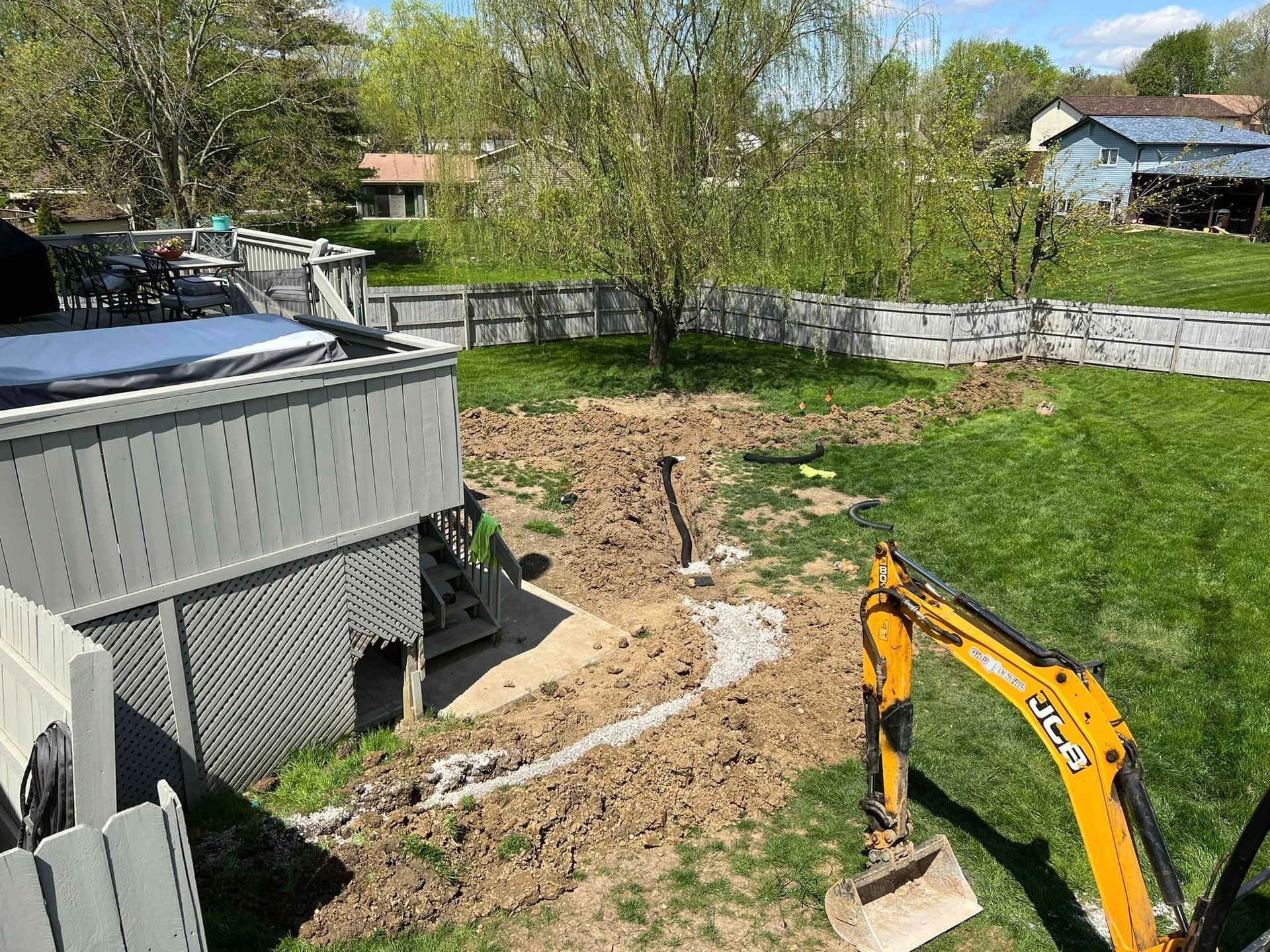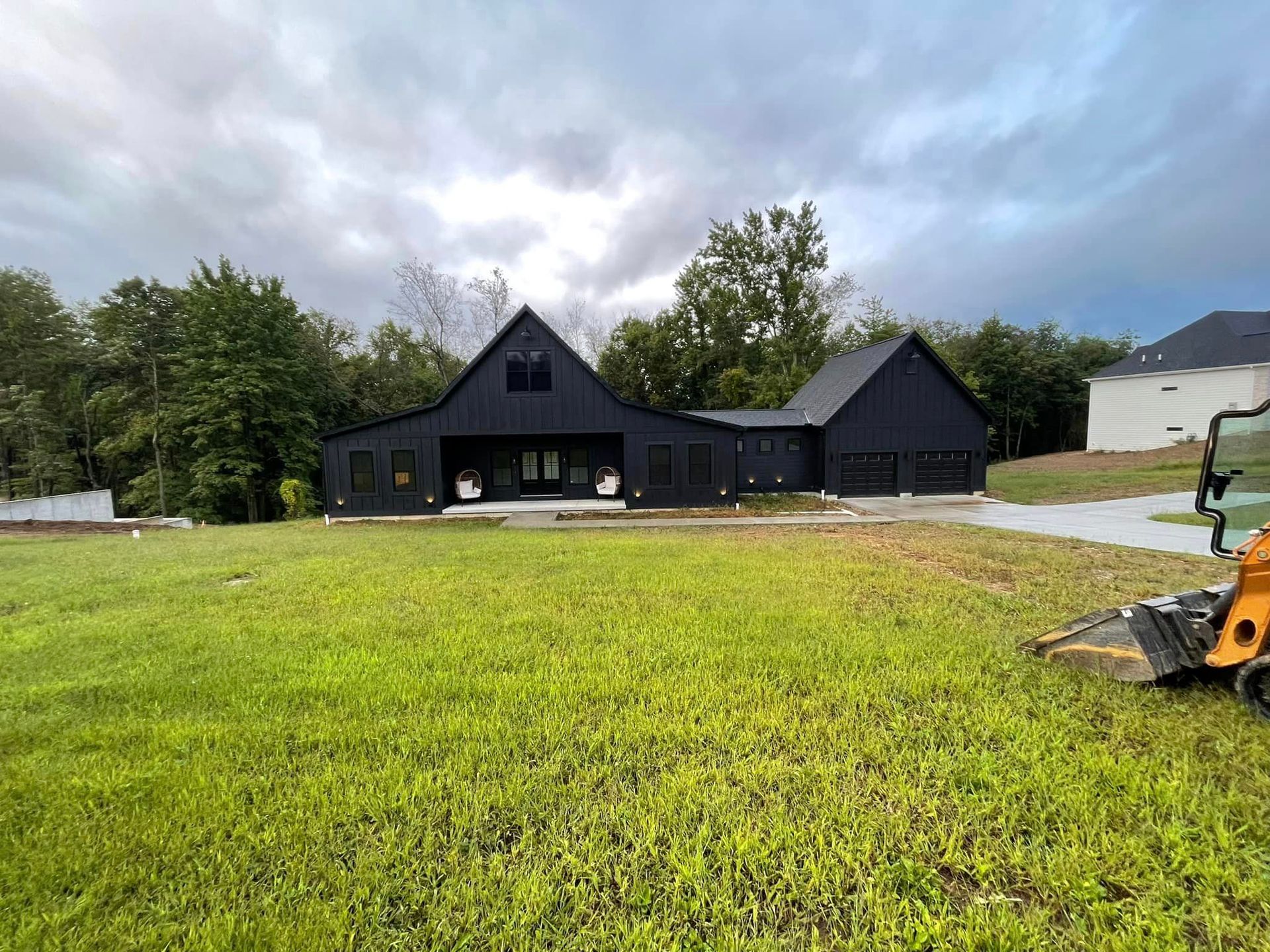Contractor's Guide to Productive Downtime: Making the Most of Wet Weather Days
Double B Excavations & Grade LLC
Work With the Weather, Not Against It
SMART PLANNING BEATS STORMY SETBACKS
Here we are in late May, and I've got the heat running in my truck. If that doesn't sum up the unpredictable nature of construction work in Ohio, I don't know what does.
This week, we've seen rain every single day, hitting different parts of our work areas at different times.
It's the kind of weather that can really test a contractor's patience - and their planning skills.
But here's something I've learned over years in this business: it's not the weather that defines your success, it's how you handle the challenges it throws at you.
When Mother Nature decides to shake things up, you've got two choices: you can sit around complaining about it, or you can turn that downtime into an opportunity.
Welcome to Double B!
Weather's Impact on Construction
Let's talk about what we're dealing with right now in central Ohio. We've got cold, drizzly conditions that are making most job sites too wet to work. This isn't just about staying comfortable - it's about making smart decisions that protect both your equipment and your client's property.
When you're dealing with heavy equipment on saturated ground, you're asking for trouble. Try to push through, and you'll end up with rutted yards, stuck machines, and repair bills that eat into your profit. Sometimes the smartest thing you can do is recognize when conditions aren't right for the work.
Sure, we've managed to get some big wins this week - like spraying about six and a half acres of hydroseed across Pataskala and Granville. But for most earthwork and grade projects, this weather means we need to shift gears and focus on other aspects of the business. It's not about stopping work - it's about being smart about what kind of work you do.
Smart Use of Downtime: Equipment Maintenance
Let me tell you what a typical "rain day" looks like for us. Right now, I'm looking at our skid steer - great machine with an enclosed cab, heat, and AC. Usually keeps you comfortable and dry while you work. But the front door handle's stripped out and won't latch properly. On a busy day, you might be tempted to just work around it. But on a day like today? Perfect time to get that fixed right.
Same goes for our trucks and trailers. The truck I'm sitting in needs new tires, and we've got three trailers that could use some spare tire checks. You might think I'm overly cautious about tires, but just this Tuesday, we had a blowout. Fortunately, we were only half a mile from a tire shop and got it fixed quick. But that kind of luck doesn't always hold out - and that's exactly why we use these down days to stay ahead of maintenance.
Planning and Preparation
Here's something most contractors learn the hard way: every piece of equipment will eventually need attention. The only real question is whether you'll deal with it on your schedule or when it decides to break down in the middle of a big job. That's why we take these wet days seriously.
We've got a system: First, we list out all the immediate needs - like that skid steer handle and the truck tires. Then we look at what might need attention soon. We call our dealers, line up parts, and schedule any work we can't handle ourselves. It might not be as exciting as moving dirt, but this kind of planning keeps us running when other crews are dealing with emergency repairs.
Just think about that tire blowout on Tuesday. We got lucky with how close we were to a shop. But what if we'd been an hour away? What if we'd been hauling time-sensitive materials? These are the kinds of scenarios you need to plan for, because sooner or later, they'll happen to everyone in this business.
Finding Hidden Benefits
You know what's interesting about these rainy days? Sometimes they work in your favor in ways you didn't expect. Take those hydroseed projects we just finished in Pataskala and Granville - over six acres total. All this rain is actually perfect for seed penetration. While we're taking care of equipment, nature's helping those seeds take root.
That's a good reminder that not every "setback" is really a setback. Sure, our enclosed cab skid steer needs that door handle fixed, but having that heated, enclosed cab means we can work comfortably in conditions that would shut down other crews. It's all about how you look at things and how you prepare for different situations.
Best Practices for Weathering Downtime
Here's what I've learned about handling these weather delays:
First, always have a rainy-day task list ready. Whether it's maintenance, paperwork, or planning upcoming jobs, there's always something productive you can do. Keep your team busy with meaningful work - it's better for morale than sending everyone home.
Second, use this time to think ahead. What equipment might need attention soon? What supplies are running low? What upcoming projects might need special preparation? A little planning now can save you major headaches later.
Final Takeaway
At the end of the day, success in this business isn't just about how well you can move dirt or lay pipe. It's about how you handle the challenges that come your way. Whether it's running heat in late May or dealing with daily rain, these situations test your ability to adapt and keep moving forward.
Remember, every contractor faces these same challenges. The ones who last aren't necessarily the ones with the newest equipment or the biggest crews - they're the ones who know how to turn downtime into an advantage. Keep your equipment maintained, your team prepared, and your attitude positive. The sun will come out eventually, and when it does, you'll be ready to roll.
Looking Forward
We can't control the weather, but we can control how we respond to it.
So next time you're faced with a rainy day, think of it as an opportunity rather than an obstacle.
Your equipment, your team, and your future self will thank you for it.








